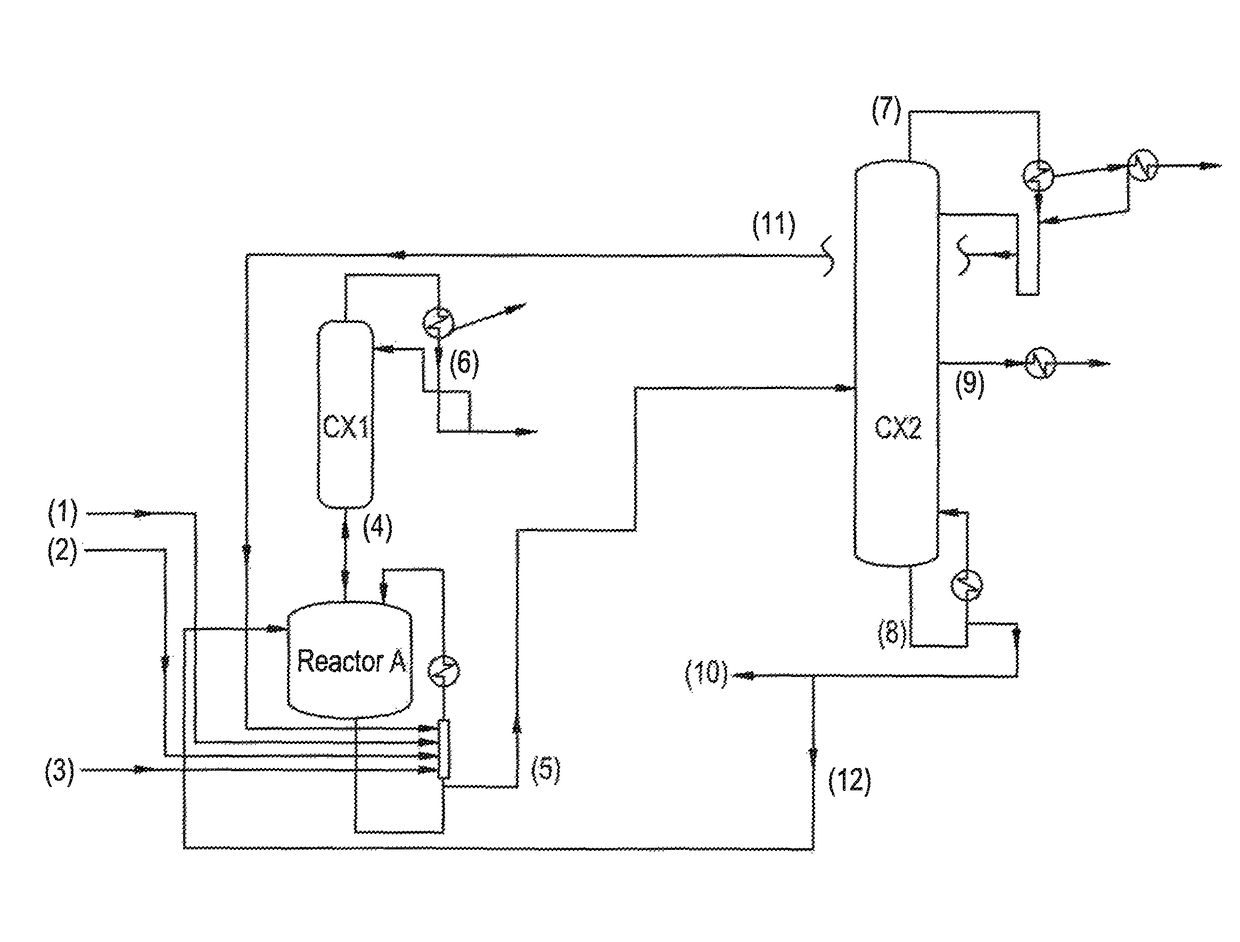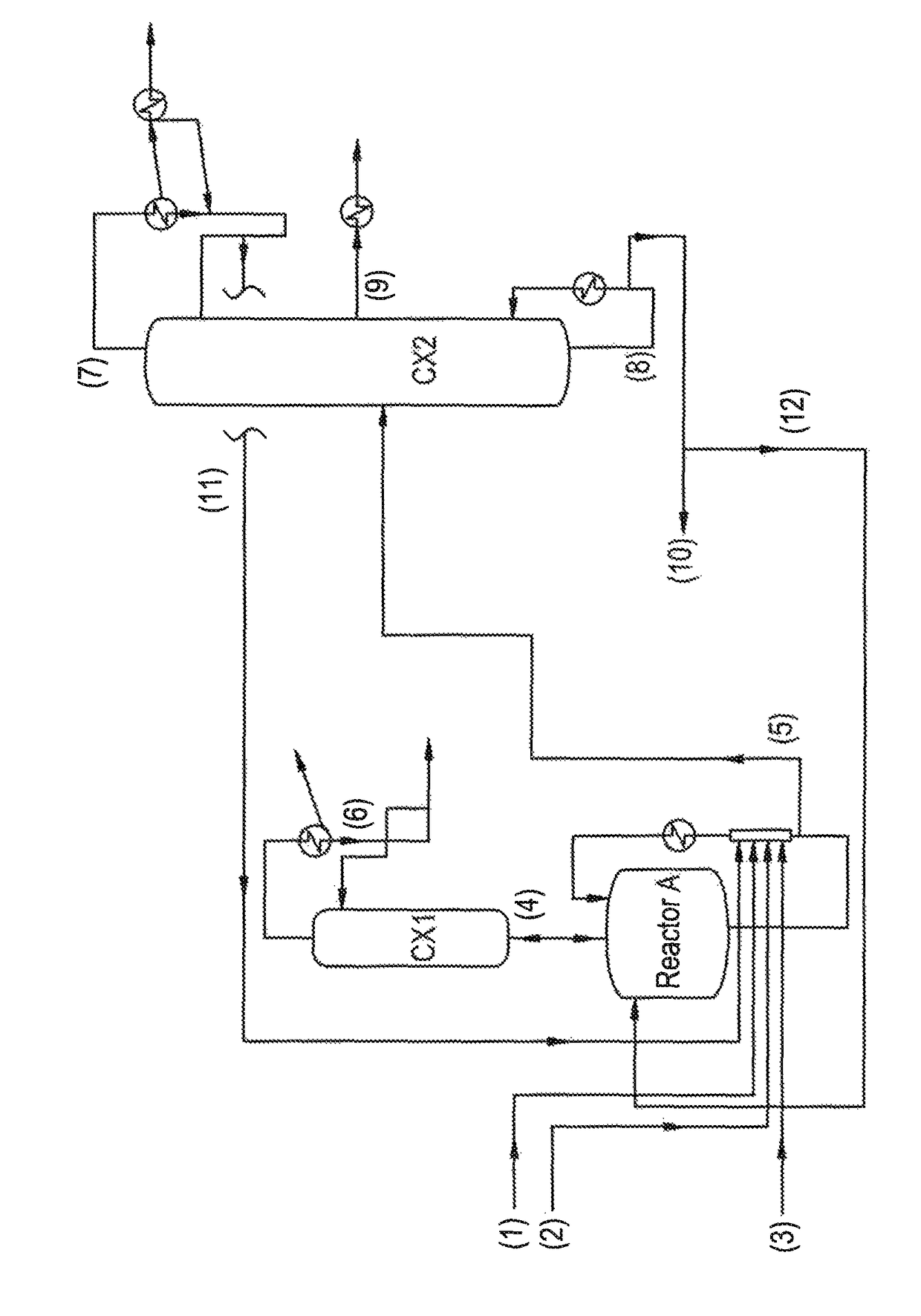Process for producing alkyl acrylate
a technology of alkyl acrylate and alkyl acrylate, which is applied in the preparation of ester-hydroxy reactions, chemical apparatus and processes, organic chemistry, etc., can solve the problems of complicated implementation, lack of flexibility in changing the type of processing streams, and cost compared to conventional columns, so as to reduce purification costs
- Summary
- Abstract
- Description
- Claims
- Application Information
AI Technical Summary
Benefits of technology
Problems solved by technology
Method used
Image
Examples
example
[0064]Ethyl acrylate (3), 2-octanol (1) and a mixture of ethyl titanate (2) in solution in 2-octanol (90% mixture of ethyl titanate in 2-octanol) with phenothiazine inhibitor, in proportions by weight of 50.1 / 49.7 / 0.2, are fed to a perfectly stirred reactor A heated by an external exchanger and with an distillation column (CX1) on top, with 12 theoretical plates.
[0065]The reactor is heated with air bubbling and as soon as the temperature reaches 125° C. under 640 millibar, the EA (3) stabilized with 2000 ppm of PTZ, the 2-octanol (1) and the ethyl titanate in solution in 2-octanol (2) are introduced continuously in proportions by weight of 50.1 / 49.7 / 0.2.
[0066]At the top of the column (CX1), the EA / ethanol azeotrope (4), with a composition by weight of 40 / 60, is drawn off continuously. This mixture (4) is recycled to the light ester facility.
[0067]The crude reaction product (5), obtained by continuous reaction, contains 2OCTA, unreacted EA, unreacted 2-octanol and a mixture comprisin...
PUM
| Property | Measurement | Unit |
|---|---|---|
| molar ratio | aaaaa | aaaaa |
| molar ratio | aaaaa | aaaaa |
| temperature | aaaaa | aaaaa |
Abstract
Description
Claims
Application Information
 Login to View More
Login to View More - R&D
- Intellectual Property
- Life Sciences
- Materials
- Tech Scout
- Unparalleled Data Quality
- Higher Quality Content
- 60% Fewer Hallucinations
Browse by: Latest US Patents, China's latest patents, Technical Efficacy Thesaurus, Application Domain, Technology Topic, Popular Technical Reports.
© 2025 PatSnap. All rights reserved.Legal|Privacy policy|Modern Slavery Act Transparency Statement|Sitemap|About US| Contact US: help@patsnap.com


